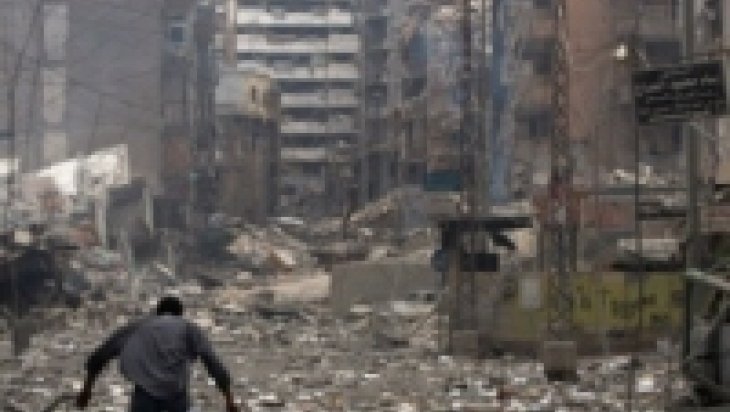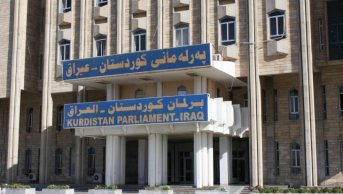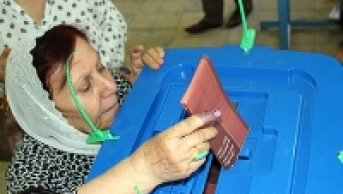Why a Potential Outbreak of War in Lebanon in 2013?

In the field of international relations, there is a fine line between predicting and playing soothsayer. The conclusion part of many articles, based on detailed analyses, is concluded with statements such as “time will show the future developments”. However, sometimes macro-analyses might make it possible to predict possible short-term or medium-term developments in various fields. Therefore, this brief analysis should be considered as an interpretation based on developments which have taken place in the Middle East for the last two decades, rather than as a strong and ambitious prediction that could be refuted before long.
The rapid change that has been taking place in the Middle East for the last two years reached a new deadlock within the ongoing process of radical change in the region since 2003. Regional relationships, which were established in the Middle East after the World War I and completely settled down after the World War II, suffered ruptures through revolutions that took place in many Arab countries in 1950s and 1960s. Following the aforesaid ruptures, alliances in the region underwent new changes each time, and these ruptures mostly led to small-scale or regional conflicts, civil wars or attempted coups against coup d'état. The intermittent Arab-Israeli Wars following the creation of the State of Israel in 1948; coup d'états/anti-coup d'état processes in Arab countries following the revolutions in Egypt, Iraq, Libya in 1950s; Iran-Iraq War and upheavals in Saudi Arabia following the Iranian Islamic Revolution in 1979; and lastly Israel-Hezbollah conflict that took place in 2006 following the 2003 U.S.-led invasion of Iraq might be given as examples to these events. The common ground of all these examples and many more is the fact that they all emerged following the ruptures in subsystem of the Middle East and generally during the major deadlocks. It cannot be suggested that the transition period that started after 2003 has not yet been completed, especially in today's Middle East. The fact that Iraq lost its former power in military and political terms led to redefinition of power balance in the region in “Sunni-Shia” axis. Iran's rising its influence in Iraq with each passing day; its playing a critical role in terms of directing Arab-Israeli Peace process through non-state actors such as Hezbollah and Hamas; its emerging as a noticeable power in East Mediterranean; and its having an influence in the region beyond its physical power due to Syria's stability and the role its played in Iraq led to instigation of “Shia Axis” dispute as of 2005.
Even though all actors in Shia Axis are not “Shia”; in return for supporting Iran's power in the region, a cooperation emerged among a series of countries (Saudi Arabia, Egypt, Jordan, Qatar...), which are described as “Sunni”, and the common grounds of which are the follow-up of the status quo. This struggle in 2000s had ethnic and sectarian dimensions also back then, as well as today. Nevertheless, the basis of this power struggle might actually be so complicated that cannot be reduced to only ethnic and sectarian dimensions. Certain factors such as transferring energy resources of the Middle East to international markets through alternative methods; failure of authoritarian regimes in oppressed states under demographic pressure to govern their own society; the rising income gap of economies depending on single-product export; huge social injustice; rapid and excessive armament leading to need for war have either been the root cause of ethnic and sectarian problems in the Middle East or fed the aforesaid problems. Just like the conflict that took place in mid-2000s as a result of factors mentioned above, today the Middle East is drifting towards a similar environment as well.
As it can be remembered, in the Middle East by mid-2000s;
· Peace process had come to a deadlock in Palestine,
· The civil war in Iraq had turned into a proxy war among the countries in the region
· Welfare caused by oil had started to be questioned,
· Radical religious movements had found new theaters of war,
· Hezbollah had increased its influence in Lebanon,
Thus, the power balances among the Middle East countries changed in favor of Iran and its allies. In this political landscape, Israel had been pulled into a war against its will by Hezbollah, and as a result, Hezbollah shattered the invincibility of Israel. After the conflict that lasted for more than a month, a new period, in which Israeli power beyond its borders was questioned, a process leading Hezbollah to increase its control on Lebanon began, the Israeli pressure on Syria decreased, and in which Hamas ended its Conquest on Gaza Strip, started. Even though this period when Iran and its allies were on the rise continued for a couple of years, the new transition process caused by problems and build-up over years stemming from the articulation of the Middle East in the international system launched a new dynamism in the region. Regardless of its root cause, the Arab Spring did not only lead to collapse of old, oppressive and inequitable regimes, or to crises in those countries. Obviously, it also had an impact on the power balance among the states in the region and on the influence of non-regional actors. Although it would not be right to draw an exact analogy, it might be suggested that the Arab Spring had similar impacts with the 2003 U.S.-led invasion of Iraq on the power balance in the Middle East. Within this framework, the change in Iraq was replaced by Egypt and Syria. On the one hand, Egypt being one of the most important political and military actors in the Middle East had a lot on its plate because of addressing domestic problems. There has not been a new regime in Egypt since the collapse of the former regime in 2011, and also the country has been in a constant turmoil due to economic and political crises. Therefore, one of the most important pillars of the Middle East equation has been striving to deal with its own problems at least for today, and it cannot do any power projection for now to the rest of the region. But what is more important is that now Syria stands where Iraq stood before. Although the regime in Syria was not toppled as the country did not witness a similar invasion process as in Iraq, the civil war that has been going on more than a year in Syria turned into a new proxy war in the region. In a sense, Iran and its rivals have been in a proxy war over Syria. However, just like in Iraq, the impacts of civil war in Syria were not only limited with this country. Similar to demographic and economic impacts of the civil war in Iraq on Jordan, the civil war in Syria had more severe impacts on Lebanon. Furthermore, beyond the one in Iraq, the civil war in Syria had major impacts also on political and economic structures of other countries in the region. In addition to this, the deadlock in Israeli politics; the crisis Iran was dragged into; the efforts of Saudi Arabia and Qatar to prevent the ongoing Arab Spring in Syria from spreading to the Gulf have been reversing the power balance in the region since 2011. Nevertheless, the change in power balance has not been taking place as fast as it was expected, and as in other examples in history, once again it hits the status quo. To sum up; the new dynamics, some of which stemming from the failure of revolutionist transition attempts, and some others stemming from struggles between countries in the region, create a new deadlock in the Middle East. This new deadlock period might be portrayed as follows:
1- The Assad regime in Syria, which was expected to be toppled before long, has not been toppled yet. The country has been pulled into an extended civil war which is splitting the country with each passing day. It is not known how the civil war in Syria might be ended. Moreover, the civil war is extended due to the fear of a sharp change, and of especially being split, among the countries in the region or non-regional actors.
2- Even in the areas where former regimes were easily toppled at the outset of the Arab Spring, the period of change reached a new stage; countries like Egypt and Tunisia were dragged into a new instability period.
3- While countries like Saudi Arabia and Qatar support transition and democratizations in a geography far from the Persian Gulf, they took a clear stance in Bahrain. The Arab Spring was prevented from reaching Bahrain for now, but the fact that this cannot last forever certainly worry the Gulf states.
4- The Peace Process in Palestine is in a complete deadlock. The deadlock stems not only from the hostility between Israel and Palestine, but also from the power struggle in Israel (constant political instability and weak governments) and Palestine (the power struggle that is getting more profound between Hamas and Fatah with each passing day).
5- Iran is rapidly drifting into a political chaos. A very complex power struggle broke out in domestic politics, beyond a power struggle between moderates and radicals, in Iran which has been witnessing the most tense period since the Islamic Revolution. Today, we see an Iran that is gradually losing its foreign allies and going through chaos one after another, rather than an Iran which concentrates its focus and resources on foreign struggle through domestic alliances as in mid-2000s.
6- Ineffectiveness of negotiations or accelerating nuclear programme despite the political chaos in Iran, in fact for that very reason, leads Israel to worry about the security with each passing day. The fact that Iran, which is on the ropes both inside and abroad, considers the nuclear power as a way to guarantee its regime increases Israel's worries about Iran.
7- States or non-state actors started to change their alliances from some years ago. There are three prominent examples to this change: Turkey, Hamas and Egypt. While Turkey had a close alliance with Syria, today they are almost on the verge of a conflict. While Hamas was among the most important allies of Iran and Syria not too long ago, today it is explicitly growing away from those countries. Although Egypt did not exactly break its agreement with Israel, it has clearly changed its stance.
8- In the Middle East politics, Kurds emerge as an important dynamic. Gaining importance in the context of Iraq after 2003, Kurds became one of the most important actors also in Syria. It is highly likely that a regime change in Syria would result in creation of a new Kurdish autonomous government or a federal district in the Middle East.
9- The civil war in Syria deeply affected the power balance in Lebanon. As many events that took place in 2012 also indicate, the political instability in the country increases. As an extension of the conflicts in Syria, conflicts break out also in Lebanon. Although parliamentary elections should be held in the country, the elections became less likely to be held.
In a nutshell, the new stage of transition in the Middle East reached a point that no country is content in the region, and each country is dragged into crisis in domestic and foreign politics, as well as armed conflict. Unfortunately, this kind of deadlocks in the Middle East frequently lead to direct or proxy wars between two or more countries. Therefore, in case the deadlock in the Middle East continues also in the forthcoming period, it is highly likely that a war might take place in the region. The question here is: When and where will the war break out? Although answers to both questions do not go beyond prediction, it seems highly likely that the deadlocks on power struggle in the Middle East and the recent history of the region would lead to another conflict in Lebanese territories between Israel and Hezbollah approximately within a year. Why an Israel-Hezbollah conflict in Lebanon? As long as such a conflict does not have a definite winner, it is by no means possible to take a step to overcome the deadlock in the region. However, considering the picture above, both parties of the polarization in the region might see the conflict as an opportunity to overcome the strategic deadlock. If a potential conflict result in favor of one of the parties, this might create a new strategic situation in the region. On the other hand, if the conflict does not result in a way that can solve the current deadlock, the vicious circle in previous years might be repeated after a certain point. The consequences of a potential conflict are listed below:
1- Israel is perceiving more threats from Iran with each passing day, and what is more, it strives to constantly prepare its own public opinion for a new conflict. Current military and political circumstances do not make it possible for Israel to have a direct conflict with Iran or to carry out an airstrike against Iran's nuclear program. In this case, the best way for the new Israeli government to be formed after all troubles would be to deal an indirect blow to Iran because of the failure to do so directly. Just as Hezbollah's becoming a party to the conflict in Syria weakened the group in Lebanon in political terms, it also provided Syria with a substantial part of its military resources. Furthermore, a possible collapse of the regime in Syria constitute a major concern for Iran. If the regime in Syria is toppled, Hezbollah would be the only ally of Iran in East Mediterranean. Therefore, Israel might have a chance to neutralize Hezbollah without the collapse of Syrian regime, without Hezbollah's refocusing on Lebanon, and even without having non-conventional weapons. It is seen that Israel, which got satisfactory results from the new missile defense system in its last conflict with Hamas, is no more worried about the missiles of Hezbollah as it was before. Moreover, Hezbollah might also go through logistic problems in case of extension of a potential conflict for reasons stemming from internal conflict in Syria. However, Israel could achieve its goals as a result of such a conflict only if Israel dealt a major blow to Hezbollah in a short while and created a situation that would shake its political influence in Lebanon. Otherwise, it might be suggested that the conflict might maintain the current situation in terms of Israel. In such a case, even if Israel once again lost its legitimacy in the international arena, this would not have a crucial impact on Israel's strategic interests.
2- In a sense, the conflict between Israel and Lebanon might turn into a means to overcome the equation between the Arab states and Iran. The superiority of Hezbollah that has been going on in Lebanon for a long time has increased as a result of each war against Israel. On the other hand, it is also known that Saudi Arabia supports some groups, which it considers close to itself in Lebanon, for them to come into power. However, despite all support, it does not seem possible for other groups to overcome the political superiority of Hezbollah supported by its own military force. Hence, a major blow that Israel could deal to Hezbollah in such a conflict might lead to the rise of groups supporting Gulf Countries or anti-Hezbollah groups in the power balance in Lebanon. What is more, a major blow that Hezbollah might take as a result of a potential conflict with Israel can accelerate the end of conflicts in Syria as well. Even though it is not right to expect the immediate collapse of the Syrian regime lacking of support from Hezbollah, it should not be forgotten that this would be a major blow to the Assad regime.
3- Medium-term and long-term impacts of a potential conflict in Lebanon on the events in Syria are inevitable. For one thing, such a conflict would not directly save the Assad regime. Unless Syria attacks on Israel on the pretext of the conflict, it is highly likely that a conflict would break out between Damascus and Tel Aviv. Therefore, Damascus' propaganda attempt for other Arab countries and the Arab public opinion regarding that it is the only Arab state fighting against Israel would come to nothing. Furthermore, Syria's involvement in such a conflict could shorten the remaining time of the regime through a major blow Israel could deal to Syrian army. But a possible conflict between Hezbollah and Israel might cut a major support to Syria. As the aforesaid support is becoming more crucial for the Syrian regime with each passing day, a potential conflict would be the loss of Damascus in the civil war in Syria.
4- As a major power loss of Hezbollah following Hamas' changing sides could lead the change process in the Middle East towards Lebanon, pro-change countries in Mediterranean coast such as Saudi Arabia and Qatar would have a major gain. Those countries, which would be able to enter Lebanon they had difficulty in influencing because of Hezbollah, would take another advantage through this blow they would deal to Iran.
5- Such a conflict could bear fruit for Israel and some Arab countries, but it might also be just the opposite. If Hezbollah ended up in victory as a result of a potential conflict, it might be an important strategic victory for Iran and its allies. In an environment where domestic politics in Iran is drifting into a crisis with each passing day, a crisis that could take place in foreign politics could prevent the expansion of chaos in the country. Especially in this period, when the power struggle between those adhering to religious leader and conservatives is on the rise, this war is a golden opportunity for those who are in favor of maintaining conflicts to further reinforce Iran in the region. The leading group in Iran, which would like to prevent internal disorders in the country by showing the external threat as a reason, might find the legitimacy of becoming harsher through a conflict abroad. Hence, a war between Israel and Hezbollah might serve as an antidote for ruptures within the regime in Iran.
6- On the other hand, Hezbollah's growing stronger at the end of a potential conflict between Israel and Hezbollah would bring a huge psychological and even financial advantage also to the Syrian regime. Hezbollah's maintaining its power is important not only in terms of the regional equation, but also in terms of the equation in Lebanon. Weakening power of anti-Hezbollah groups in Lebanon once again would not only decrease the support to be provided from Lebanon to Syrian opposition, it could also further reinforce Hezbollah and make the group focus on the developments in Syria.
7- As a potential war in Lebanon would trigger fears in Western world about spillover effects of the war in Syria, it would further decrease already reluctant attitude of Western countries on an intervention in Syria. Thus the regime in Syria would feel more secure.
8- Iran wouldn't leave a possible conflict in Lebanon unanswered, and it would hold Gulf countries responsible, as well as Israel, for such a situation. In that case, it might be possible for Bahrain to once again drift into an instability. On the other hand, Iran's playing its Bahrain trump card could expand its political struggle arena, but also it might be a step to turn the tables in case Lebanon is on the ropes.
To sum up, the power balance and relations in a deadlock in the region is becoming further deadlocked with each passing day. This situation indicates a new conflict in the Middle East which is a region with high war tendency due to the regional dynamics and state/regime types. As it would be inevitable for Turkey to be affected by such a conflict, Turkey should brace itself for this possibility.











